Project
Chester Zoo
Reed Bank Enhancement
Client: Chester Zoo
Final Value: £16,871
Start Date: Sep 2022
Finish Date: Dec 2022
Background
CCNW was commissioned by Chester Zoo’s conservation & science team to carry out reed bed management and ditch enhancement works within a site located within the Chester Zoo nature recovery corridor adjacent the main zoo area.
The site used to be grazed but has succeeded into reed bed over the past 10 years. The reed bed is bounded by the Shropshire Union Canal towpath to the north, and a field boundary hedgerow to the south.
The reed bed had been left for ten years or more and was overgrown with willow scrub, willow herb, and reed-sweet grass, which was encroaching and suffocating the reed bed. If left untreated it would revert back into scrub and would eventually dry out.
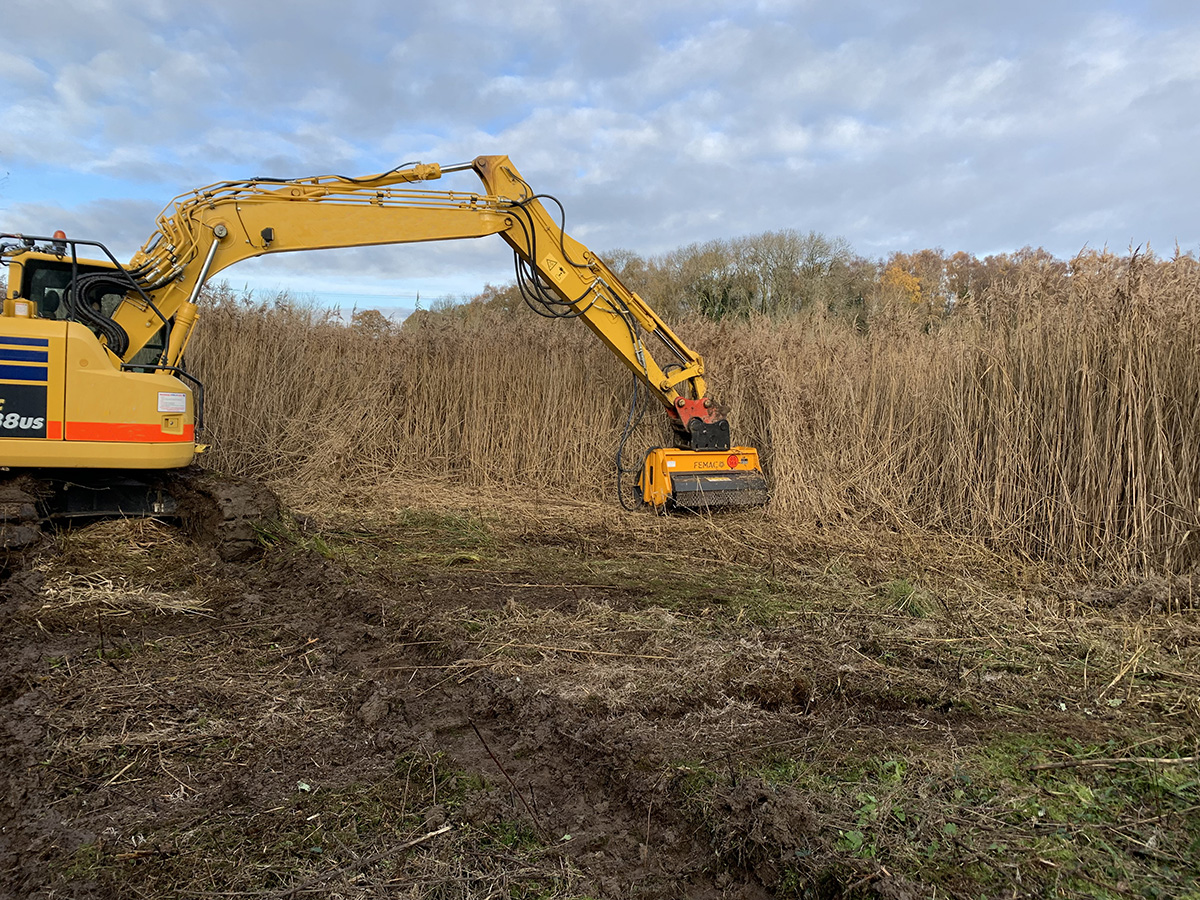
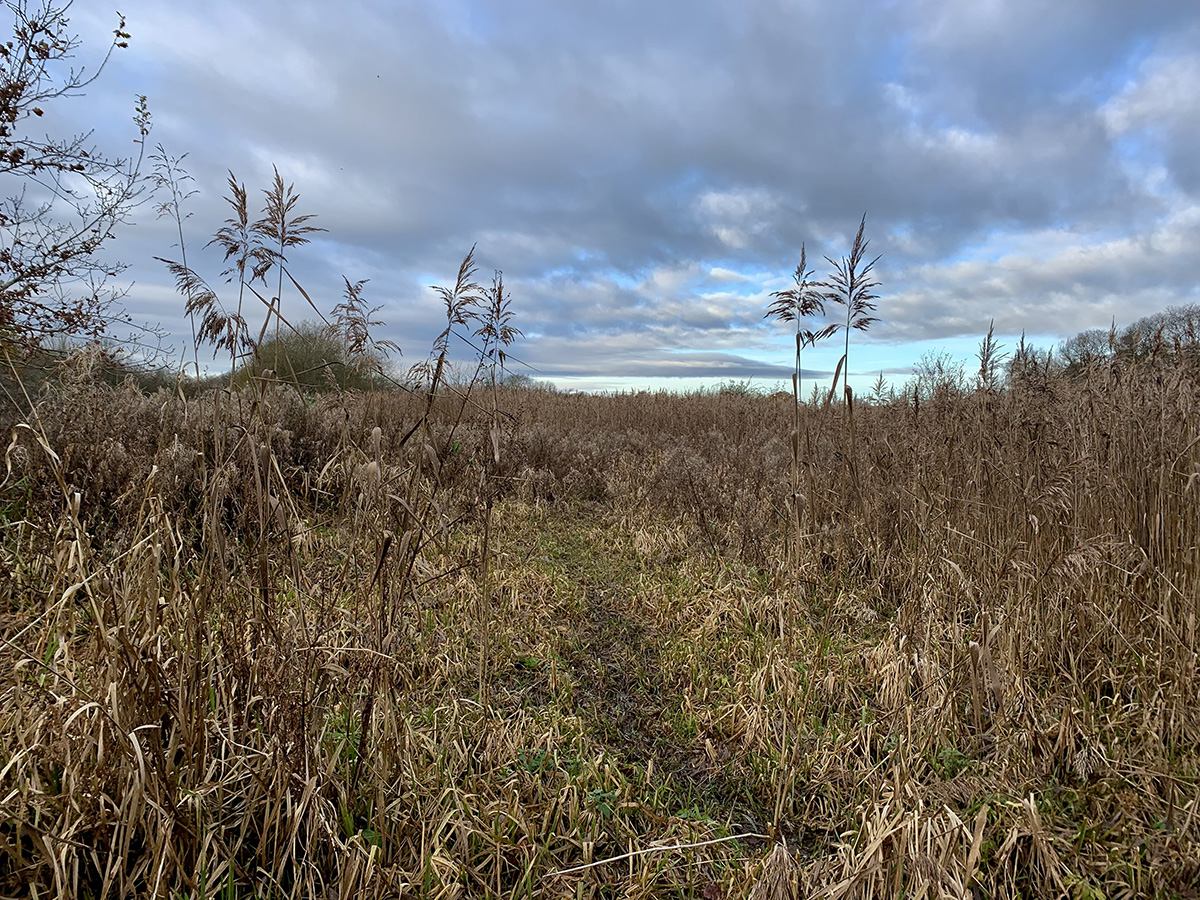
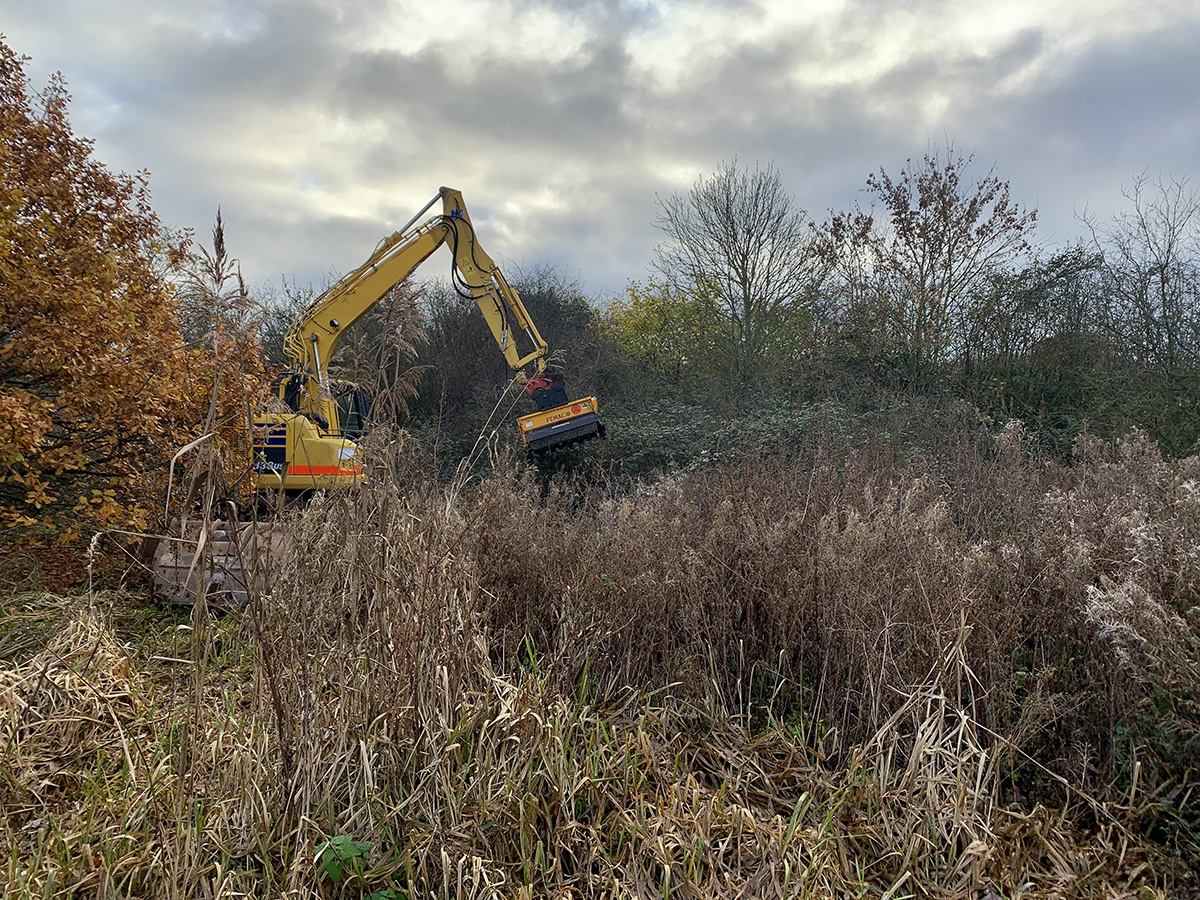
Project Aim
The aim of the project was to enhance the existing reed bed for approximately 1 hector by cutting of reed growth and removing other vegetation including scrub. Within this process, to reduce the dense scrub and weed growth. The area also has a large amount of thatch build up, and therefore all thatch needed to be collected. The ideal approach would expose bare ground and deposit all brash within designated piles adjacent to the hedgerow.
Another key requirement included the reinstatement of an old dich line which runs through the centre of the reed bed by reprofiling and deepening. In addition, a remnant of barbed wire fencing attached to timber posts throughout the reed bed area was to be removed and disposed of off-site.
Special Features
Habitat Improvement Works
Services
Reed Bed Enhancement
Scrub Removal
Ditch Enhancement
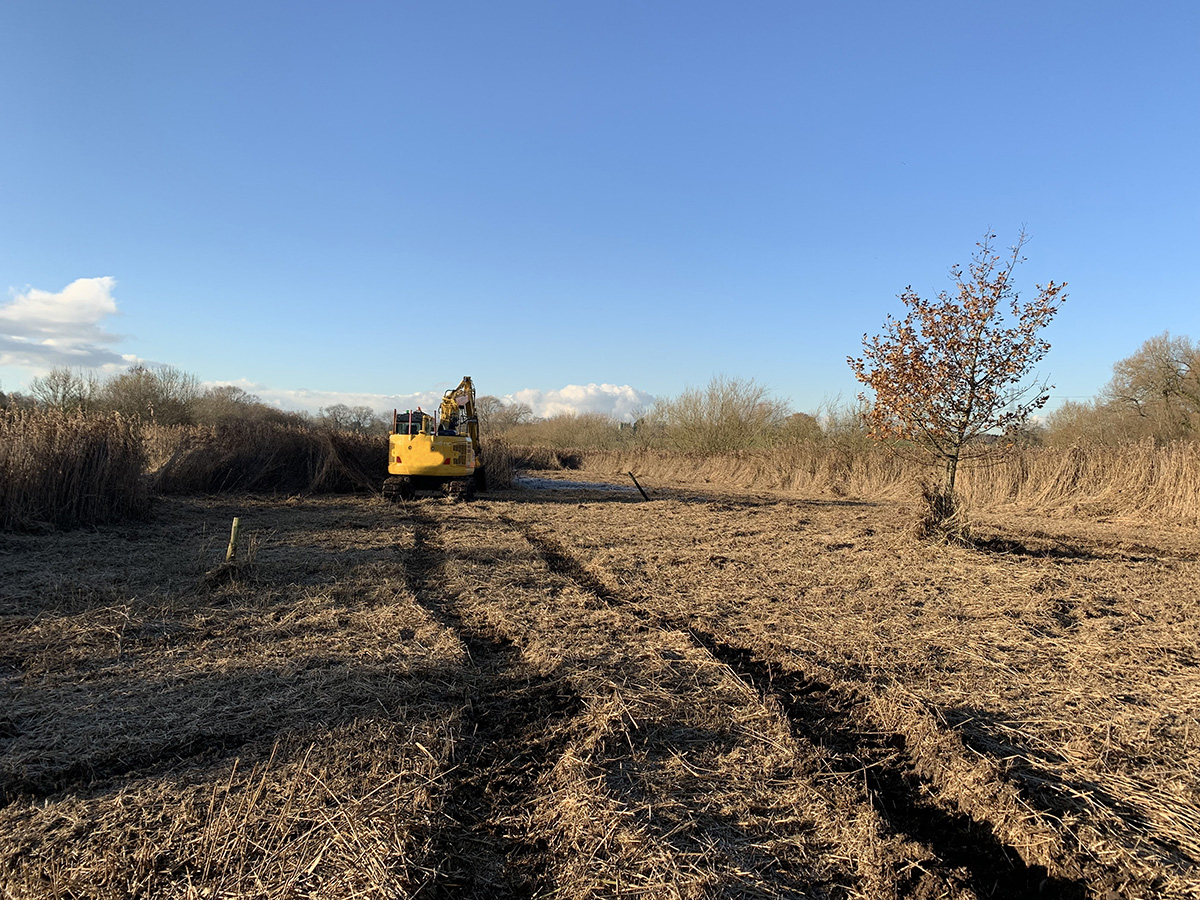


CCNW Solution
Site access -Reed bed cutting
The access to the site was difficult and the only access point was through a field gate which led to a green lane that runs adjacent to the west side of Chester Zoo’s nature reserve and onto the reed bed. The ground at the end of the green lane was rough and uneven and had a steep slope leading to the entrance of the reed bed. The CCNW plant team reprofiled and moved the earth within the area to reduce the incline, allowing easy access by machinery to carry out the cutting of the reed bed.
Reed bed cutting
All targeted willow scrub and reed growth was cut by means of using a 14-ton excavator equipped with a brush cutting attachment, enabling the reed growth to be cut close to the ground. The cut brash was then placed through the brush cutter again and mulched up. The total area cleared was approximately 1 hector. The areas of thatch build up were mulched and moved to areas along the boundary hedgerow and placed within piles.
The redundant barbed wire fencing which ran along side of the existing ditch line was uncovered and removed and taken off site for disposal.
Ditch reprofile works
The existing ditch line ran through the centre of the reed bed area from east to west. The existing ditch was entirely filled in, but still held more water than the surrounding area. Therefore, the ditch required re-profiling and deepening to be able to hold open water again.
The CCNW team carried out the deepening and re-profiling of the existing ditch line. In carrying out the deepening and reprofiling works the ditch was enlarged to a width of a maximum of 5m, and a depth of 1.5-2m, with gradual sloping margins. All excavated spoil was bunded on both sides and compacted.
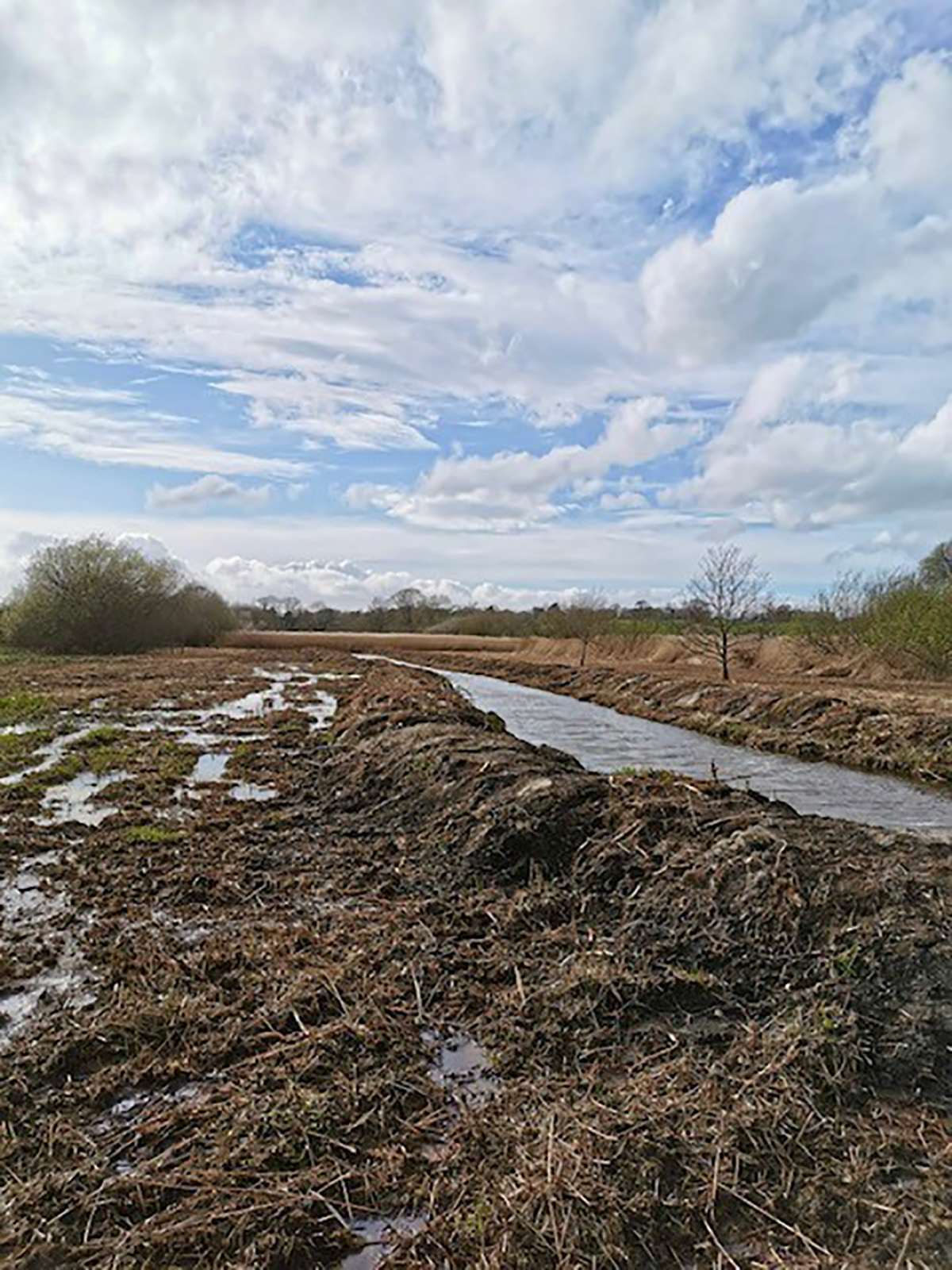
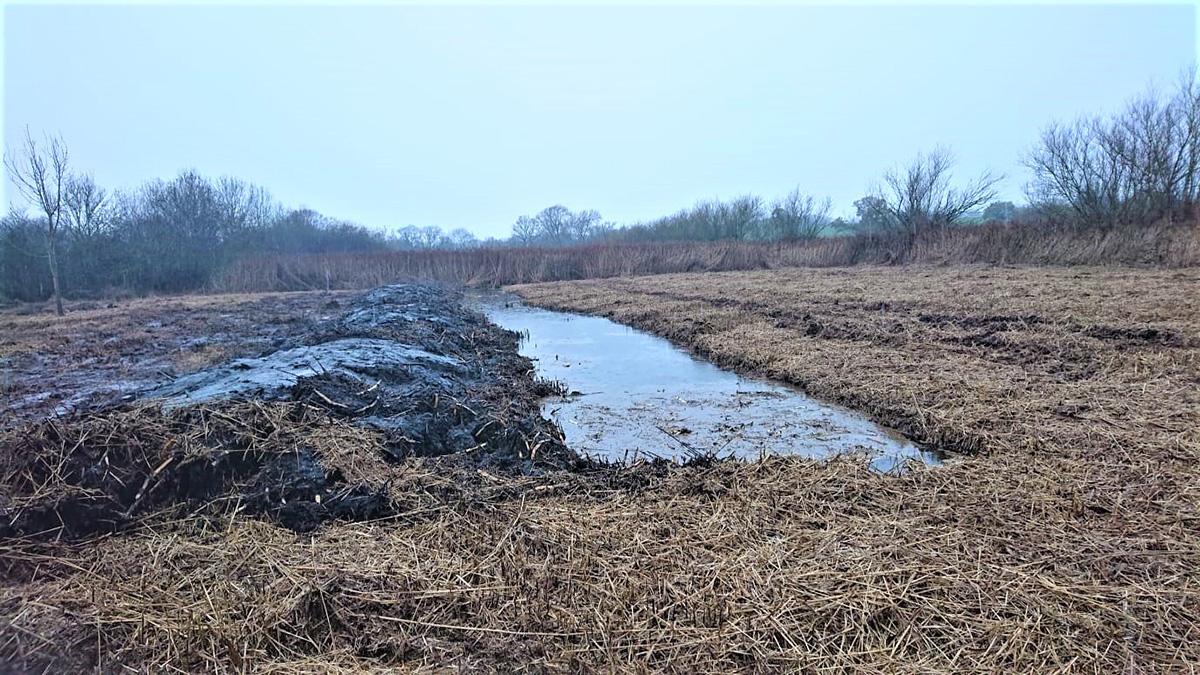

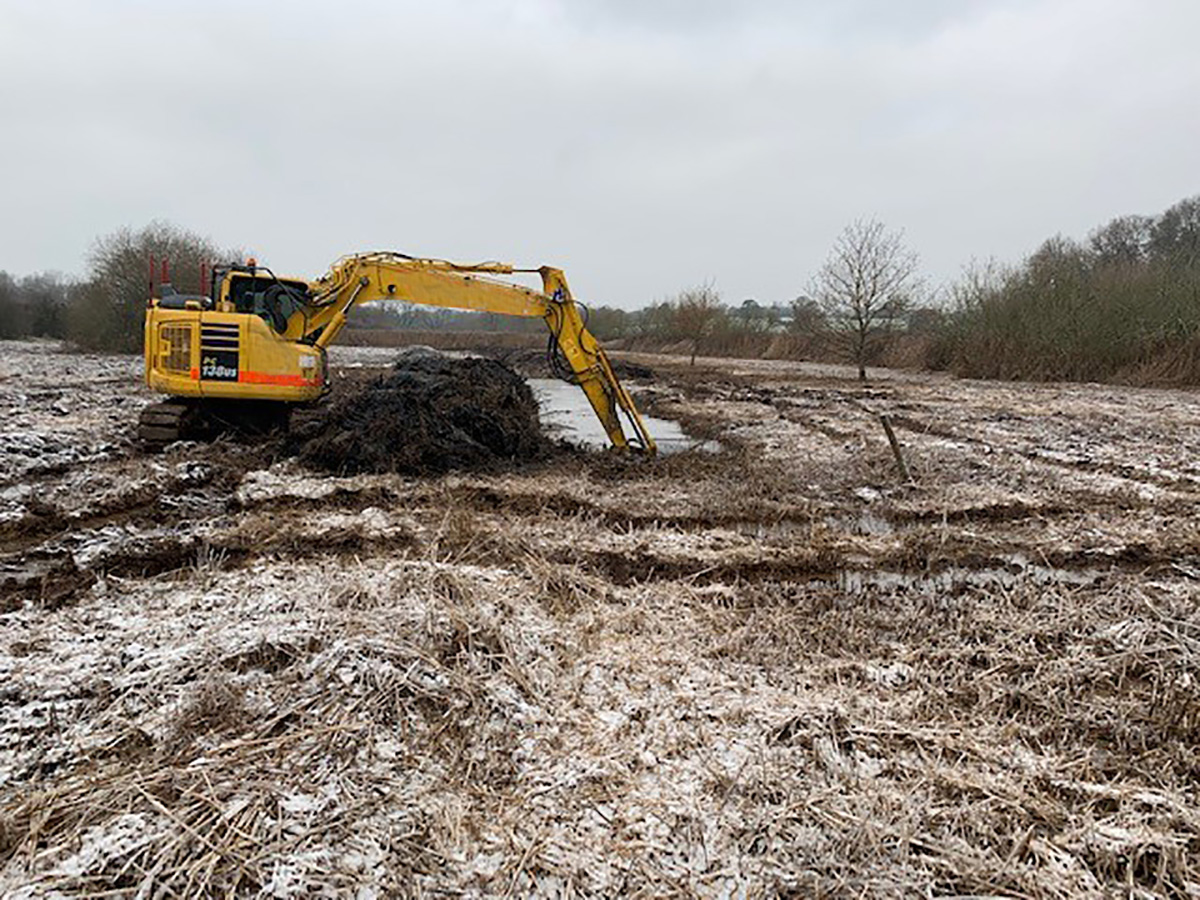


Start a conversation with us today

If you wish to sign up to our quarterly newsletter, please fill out the subscription below.
